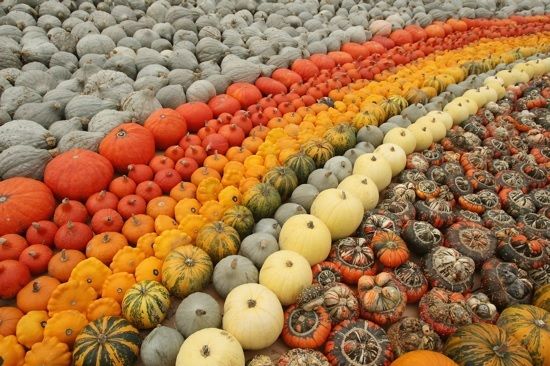|
|
Post by UKarchaeology on Nov 24, 2015 2:15:37 GMT
 UNIVERSITY PARK, PENNSYLVANIA— UNIVERSITY PARK, PENNSYLVANIA— Some 12,000 years ago, mastodons, mammoths, giant sloths, and other megafauna ate wild species of pumpkin and squash and distributed the seeds in their dung. At this time, such wild members of the cucurbita family were bitter and toxic to humans and smaller animals. When the megafauna went extinct, the cucurbita plants lost their distribution system and their preferred landscape, which was created by the large animals. “We performed an ancient DNA study of cucurbita including modern wild plants, domesticated plants, and archaeological samples from multiple locations. The results suggest, or confirm, that some lineages domesticated by humans are now extinct in the wild,” George Perry of Penn State said in a press release. The team found that that the widely diverse plants may have been domesticated at least six different times in six different places, but were probably not used for food at first. “Rather, they might have been useful for a variety of other purposes like the bottle gourd, as containers, tools, fishnet floats, etc. At some point, as a symbiotic relationship developed, palatability evolved, but the details of that process aren’t known at the present,” explained Logan Kistler, NERC Independent Research Fellow, University of Warwick, and a recent Penn State postdoctoral fellow. Source: www.archaeology.org/news/3901-151123-megafauna-pumpkin-domestication |
|
|
|
Post by UKarchaeology on Nov 24, 2015 2:20:34 GMT
Another article on the matter; Mammoth Extinction Made Way For Non-Toxic Gourds To Flourish and EvolveHad mastodons, mammoths and giants sloths not gone extinct thousands of years ago, there may not have been enough pumpkins or squash to go around – especially for humans. While early humans did not necessarily eat wild varieties of gourds, large animals, also known as megafauna, often consumed these fruits 12,000 years ago. "It's been suggested before, and I think it's a very reasonable hypothesis, that wild species of pumpkin and squash weren't used for food early in the domestication process," Logan Kistler, a postdoctoral fellow at Pennsylvania State University, said in a news release. "Rather, they might have been useful for a variety of other purposes like the bottle gourd, as containers, tools, fishnet floats, etc. At some point, as a symbiotic relationship developed, palatability evolved, but the details of that process aren't known at the present." Humans did not initially take a liking to wild pumpkin and squash, which are members of the cucurbita family, because they were originally bitter and toxic. Today, however, pumpkins and squash are widely consumed – especially during the holiday season. For their study, researchers from Penn State recovered wild gourd seeds from ancient, preserved mastodon dung and compared them to modern varieties and other archeological specimens. When tracing evolutionary history of gourd seeds, researchers found that the disappearance of large animals directly correlated to changes in distribution of the wild plants. "We performed an ancient DNA study of cucurbita including modern wild plants, domesticated plants and archaeological samples from multiple locations," George Perry, assistant professor of anthropology and biology, explained in the university's news release. "The results suggest, or confirm, that some lineages domesticated by humans are now extinct in the wild." Full story: www.natureworldnews.com/articles/18368/20151123/mammoth-extinction-allowed-non-toxic-gourds-flourish-evolve-today.htm |
|